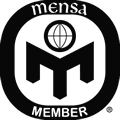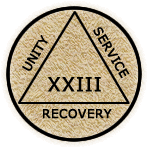Selected portions of the BloostonLaw Telecom Update, and/or the BloostonLaw Private Users Update — newsletters from the Law Offices of Blooston, Mordkofsky, Dickens, Duffy & Prendergast, LLP are reproduced in this section with the firm's permission. 
| BloostonLaw Telecom Update | Vol. 17, No. 3 | January 23, 2014 |
Headlines 
Letters Filed in the Tenth Circuit on the Open Internet Order Just days after the Court of Appeals for the District of Columbia released its decision striking down parts of the FCC's Open Internet (a.k.a. Net Neutrality) Order, petitioners and respondents alike filed letters with the Court of Appeals for the Tenth Circuit arguing that the D.C. court's opinion supports their arguments in the Tenth Circuit. On January 16, petitioners Cellular South, Inc. ("C Spire") and the Rural Independent Competitive Alliance ("RICA") filed a letter arguing that the D.C. Circuit's opinion supports the argument made in the Tenth Circuit proceeding that the requirement that USF recipients must provide broadband internet access "on reasonable request" unlawfully imposes a per se common carriage obligation. On that point, the petitioners cited the D.C. Circuit statement that, "Given that the Commission has chosen to classify broadband providers in a manner that exempts them from treatment as common carriers, the Communications Act expressly prohibits the Commission from nonetheless regulating them as such." The obligation to serve "on reasonable request," or "without undue discrimination," it added, is per se common carriage. On January 17, the FCC filed a letter with the Tenth Circuit that in its Open Internet opinion, the D.C. Circuit rejected an argument that was analogous to an argument made by certain petitioners in the Tenth Circuit. According to the letter, the wireless carrier petitioners in the Tenth Circuit argued that the FCC acted ultra vires because the agency "is without authority to promulgate rules to implement the 'statutory objectives' of § 706." However, in the Open Internet opinion, the D.C. Circuit found that section 706 generally "vests [the FCC] with affirmative authority to enact measures encouraging the deployment of broadband infrastructure" and that the FCC "reasonably interpreted" that subsection "to empower it to take steps to accelerate broadband deployment if and when it determines that such deployment is not 'reasonable and timely.'" According to the FCC, this supports its arguments in the Tenth Circuit that it had the authority under section 706 to promulgate the USF/ICC Reform Order and associated rules. The same day, a group of wireless petitioners including Cellular Network Partnership, C Spire, DOCOMO Pacific, Inc., Nex-Tech Wireless, LLC, PR Wireless, Inc., and United States Cellular Corporation responded to the FCC's letter. According to the response, the D.C. Circuit was wrong in rejecting the argument that the FCC did not have authority under section 706. They reiterated that, contrary to the D.C. Circuit's conclusion, Congress did not expressly direct that the 1996 Act "be inserted" into the 1934 Act. Rather, section 706 was one of fourteen sections of the 1996 Act that contained no reference to an amendment or repeal of any section or provision of the 1934 Act. Consequently, § 706 was not among the 1996 amendments to the 1934 Act. Because the FCC's rulemaking authority is limited to prescribing rules to carry out the provisions of the 1934 Act, the agency was without authority to adopt rules to implement § 706, and no Chevron deference is due its interpretation of §706. On January 21, Transcom Enhanced Services, Inc. ("Transcom") also filed a letter responding to the FCC's January 17 letter, in which Transcom argues that in light of the D.C. Circuit opinion, the FCC cannot impose per se common carrier obligations on enhanced/information service providers. However, the letter primarily reiterates arguments found in Transcom's Tenth Circuit brief, and appears to quote the D.C. Circuit opinion solely for the proposition that, "[r]egardless of how serious the problem an administrative agency seeks to address, . . . it may not exercise its authority in a manner that is inconsistent with the administrative structure that Congress enacted into law." C Spire and RICA filed a second letter, also on January 21, in which those petitioners respond to the FCC's letter of January 17 (as noted above, the FCC letter was filed after the original C Spire / RICA letter). According
to C Spire and RICA, the FCC's letter ignores the D.C. Circuit's key determination: "whatever general substantive authority the FCC might be granted under section 706, it '... may not ... utilize that power in a manner that contravenes any specific prohibition contained in the Communications Act.'" As such, the USF/ICC Reform Order's requirement that USF recipients provide broadband access on reasonable request results in an imposition of common carrier obligation that overreaches the limitations of the FCC's section 706 power. The letter goes on to emphasize the D.C. Circuit's language: "We think it obvious that the Commission would violate the Communications Act were it to regulate broadband providers as common carriers." NTCA Releases Results of 2013 Wireless Survey Results of the "2013 Wireless Survey Report," conducted by NTCA–The Rural Broadband Association last fall, were made available last week. Despite difficulties in securing financing and access to wireless spectrum, the survey suggests that the provision of fixed and mobile wireless services continues to be a significant priority for the nation's small, independent telecommunications providers. Of the more than 100 NTCA member companies that participated in the survey, 60% reported they were currently providing wireless service to their customers. Of these, 82 percent reported offering fixed broadband; 49 percent provide mobile voice; 43 percent provide mobile broadband; and 29 percent provide fixed voice services. Seventy-three percent of all respondents considered competition from nationwide carriers to be a significant concern in providing wireless services, followed by the ability to make necessary investments, handset/equipment availability and the ability to obtain spectrum at auction. Obtaining access to licensed spectrum proved to be a common concern among small, rural wireless communications providers, because these companies lack the size and resources to bid for large geographic spectrum blocks at auction. This makes it all the more important for small carriers to participate in advocacy efforts aimed at having spectrum licensed in smaller geographic areas, such as Cellular Market Areas (or "CMAs"). More than two-thirds of survey respondents that are currently providing wireless service indicated that they hold at least one spectrum license. NTCA drew the following conclusions from the 2013 Survey: - The ability to compete with national carriers remains the primary concern of small rural providers.
- Obtaining financing for wireless projects poses a significant challenge for survey respondents.
- Small, rural wireless providers offer their customers a wide array of features, and offer these features to a majority of their customers.
- Despite the challenges facing rural wireless providers, their customers tend to be more loyal than those of the larger carriers.
"Due to their size and scale of operations, small wireless carriers are at an extreme disadvantage when competing with larger carriers for potential customers," said NTCA Economist Rick Schadelbauer. "This disadvantage can be lessened, to some extent, by rules that mandate fairness in negotiating roaming agreements, or that give smaller entities a realistic opportunity to compete for and obtain spectrum at auction. It is critical that these and other important safeguards continue to allow small providers to do what they do best: provide high-quality service to customers in the most remote areas of our country." Nationwide Carriers Push for Larger 600 MHz License Sizes in Incentive Auction In response to the FCC's recent inquiry on the size of licenses to be sold as part of the "incentive auction" that
will reclaim valuable 600 MHz spectrum from broadcasters, the nation's largest carriers are urging the FCC to use Economic Area ("EA")-sized licenses. If the FCC carries through with the EA approach, many small and rural carriers may be precluded from having a realistic opportunity to bid on 600 MHz spectrum, especially west of the Mississippi River where EAs can occupy huge expanses of land. In an ex parte filing on December 3, 2013, AT&T argued for an EA licensing approach. AT&T also argues that if the FCC were to adopt smaller license sizes, it is imperative that the Commission allow for package bidding, "to address the even greater exposure risks that would be created by more disaggregated license areas." AT&T further claims that its hierarchal package bidding proposal would "satisfy the substance of the Commission's statutory mandate to "consider assigning licenses that cover geographic areas of a variety of different sizes." AT&T urges the Commission to reject the RWA/NTCA Proposal because it "adds complexity to what has already been widely acknowledged as one of the most complicated proceedings in Commission history." (p. 9) Verizon likewise supports licensing of the 600 MHz and AWS-3 spectrum using EAs, and permitting package bidding. Of the proposal to use smaller license areas, Verizon says: "If an applicant fails to obtain one CMA or PEA license within that wider area, it risks leaving gaps in its desired service area that, post-auction, it could only fill through secondary market acquisitions." Verizon claims that areas smaller than EAs also complicate their ability to deploy spectrum because of the need to "manage significantly more potential co-channel interference along their service area boundaries." T-Mobile also favors larger license areas, but allows that using PEAs or other similarly-sized geographic licensing areas may also be workable, provided that the Commission does not overlay package bidding on the proposed auction design and, instead, uses reasonable spectrum-aggregation limits to constrain exposure risk. Small and rural carriers have a more clearcut ally in US Cellular, which strongly supports licensing both the 600 MHz and AWS-3 spectrum bands on the basis of the smaller Cellular Market Areas ("CMAs"), and strongly opposes any form of package bidding in either auction. USCC correctly observes that "CMAs also allow bidders to acquire the precise locations called for in their business plans without also acquiring — and excluding other carriers from serving — those additional areas that would otherwise accompany the bidders' targeted locations in a larger license area." The issue of service area size comes down to a matter of balancing the following interests (1) facilitating participation in the 600 MHz auction by a wide variety of entities, including small businesses and rural telephone companies; and (2) facilitating the efficiency by which nationwide carriers are able to acquire contiguous spectrum blocks over large areas. As BloostonLaw sees it, the FCC only has a statutory obligation with respect to the first objective, so this needs to be a priority. In a wireless marketplace where the FCC has found effective competition lacking in the three most recent CMRS Competition Reports, the Commission must not further skew the balance in favor of the nation's largest wireless carriers, who already dominate the marketplace, by designating EA license sizes or allowing package bidding for smaller licenses. The nationwide carriers already have tremendous economies of scale and overwhelming market power and have no trouble acquiring the spectrum that they desire in the secondary market, if and when they need it. Thus, the potential "exposure problems" of which they complain are overblown. Small service areas have never been a hindrance in the past and have helped to maximize auction revenues. If the FCC is able to come up with a way to make available CMA licenses, or a combination of license sizes that results at least one-third of the available 600 MHz spectrum being licensed in CMAs, we believe the FCC can promote meaningful competition by diverse set of bidders and maximize revenues in the broadcast incentive auction. To that end, the Blooston Rural Carriers (BRC) are filing reply comments by the Jan. 23 deadline, pointing out that: - In addition to allowing the FCC to meet its statutory obligations under the Communications Act, the record shows that CMA licensing of the 600 MHz band will allow the Commission to fulfill other important public interest objectives, including promoting wireless competition from a diverse pool of service providers, increasing the amount of interference-free spectrum that will be available for bidding, and resulting in better and more uniform coverage with less uncovered areas. In contrast, larger geographic licenses, such as EAs (or PEAs as currently drawn), are likely to result in rural spectrum that is "locked up" in larger markets where licensees are focused on providing service to metropolitan areas.
- It is plainly evident that package bidding will "gift wrap" 600 MHz over large geographic areas for the largest carriers that already overwhelmingly dominate the industry. Concerns about an "exposure problem" is another way of saying "nationwide carriers will be forced to pay more if they want a particular license." All auction bidders face this risk, and should face this risk equally. If the FCC adopts a hybrid approach favored by the Blooston Rural Carriers and others, both EA and CMA licenses will be available for bidding, reducing the "exposure risks" suggested by AT&T.
Clients interested in participating in the BRC reply comments should contact the firm as soon as possible. Law & Regulation
Senator Franken Asks FCC to Preserve Equal Access to Internet On January 16, 2014, U.S. Senator Al Franken (D-Minn.) sent FCC Chairman Tom Wheeler a letter to request the FCC to take swift action to preserve net neutrality and keep the Internet a level playing field for everyone, after the U.S. Court of Appeals for the District of Columbia Circuit struck down certain FCC net neutrality rules. Sen. Franken asserted that the court's decision is a major setback to Minnesota consumers and small businesses, and that it threatens Internet freedom. He called on the FCC to establish new net neutrality rules to preserve equal access to the Internet. "The Internet is an open marketplace where everyone can participate on an equal footing," Senator Franken said, "and that's the way it should be — the website of a Minnesota small business should load as quickly as the website of a large corporation". He went on to say that "net neutrality is the commonsense idea that big corporations like Verizon, Comcast, and Time Warner shouldn't control who gets to innovate, communicate, or start a business on the Internet. Getting rid of net neutrality is bad for consumers and the economy, plain and simple, and it's a real risk to the Internet as we know it." Generally speaking, Senator Franker said, net neutrality is the principle that the Internet belongs to the people, not huge corporations. That means that ISPs like Verizon, Time Warner and Comcast cannot pick and choose what content to allow, and should not be allowed to charge more for faster speeds to access that content. "The FCC must act quickly to preserve net neutrality in response to [the Court's] decision. Fortunately, the court clearly stated that the Telecommunications Act of 1996 empowers the FCC to promulgate rules governing broadband providers' treatment of Internet traffic. This means that the FCC already has the legal authority it needs to require net neutrality. The FCC must exercise that authority to implement new rules that will preserve access to the Internet." New 911 Regulations Effective February 18, 2014 The FCC's December 12, 2013 Report and Order laying out the new 911 requirements (reported in the December 18, 2013 edition of the BloostonLaw Telecom Update) has now been published in the Federal Register, which means that the new requirements will become effective as of February 18, 2014 . However, this does not include the Annual Reliability Certification and Initial Reliability Certification required under new Sections 12.4(c) and (d)(1), as they involve new "information collections" which must be approved by the Office of Management and Budget under the Paperwork Reduction Act before they can take effect. The new rules require covered 911 service providers, which includes virtually all providers, including wireline, wireless, and voice over internet protocol (VoIP), to take "reasonable measures" to ensure 911 circuit diversity, availability of backup power at central offices that directly serve PSAPs, and diversity of network monitoring links. According to the FCC, a service provider can demonstrate its compliance with the requirement to take "reasonable measures" to ensure reliable 911 service, by complying with the "best practices" which make up the certification and which are based on the industry best practices developed by the Communications Security, Reliability, and Interoperability Council (CSRIC). Although a service provider may depart from best practices, if it does so, the FCC states that the service provider should have a reasonable basis for its decisions, coupled with appropriate steps to compensate for any increased risk of failure. According to the FCC, "where service providers employ alternative measures in lieu of best practices, they should be able to explain why those measures are appropriate and reflect reasonable measures to provide reliable 911 service." Industry 
Fraudsters Use Telephones Much Like the Internet While phone scams have been around since telephone service was introduced, more recent scams are taking on a life by using tactics similar to the Internet. Over the past few years, there has been a significant rise in "phishing" type scams (called "vishing" if done by phone) as well as denials of service. According to The New York Times, the Federal Trade Commission stated that in 2012, 34 percent of its fraud complaints were related to telephone calls — up from 20 percent in 2010. Like their Internet cousins, vishing scams utilize tactics that are designed to harvest personal information from the recipient of the call — in an attempt to gain access to financial and credit card accounts. And, unlike phishing scams on the Internet, where more sophisticated users can verify the legitimacy of the email by looking at the sender's e-mail address or URL for the click button link before responding, vishing scams over the phone network are much more difficult to identify — especially since Caller ID information is generally spoofed by scammers to make it look like the call is coming from a legitimate source. Because of this threat, the only defense is not to provide information in response to an unsolicited phone call. Rather, the recommendation would be to now call the customer service section of the financial institution in order to verify the authenticity of the call. The New York Times has also reported that the Department of Homeland Security has indicated that there have also been more than 200 denial of service attacks on phone networks, including hospitals, major corporations and public safety answering points. These attacks, which flood phone systems with malicious inbound calls, cause busy signals and make them unavailable to legitimate callers. Recently, these denial of service attacks have targeted PSAPs in Tarrant County, Texas as well as a US Coast Guard cutter. A typical ruse behind the denial of service attack is a phone call from an alleged debt collector seeking repayment of loans that had been taken out by the employee. The callers threatened to disrupt the lines at the employees' workplaces if the alleged debts were not paid. Some employees paid up out of sheer embarrassment, while others did not. Unfortunately, these denial of service attacks are simple to initiate because it can be done over the Internet using random dialing software and Internet phone services. Deadlines 
FEBRUARY 1: FCC FORM 502, NUMBER UTILIZATION AND FORECAST REPORT. Any wireless or wireline carrier (including paging companies) that have received number blocks — including 100, 1,000, or 10,000 number blocks — from the North American Numbering Plan Administrator (NANPA), a Pooling Administrator, or from another carrier, must file Form 502 by February 1 . Carriers porting numbers for the purpose of transferring an established customer's service to another service provider must also report, but the carrier receiving numbers through porting does not. Resold services should also be treated like ported numbers, meaning the carrier transferring the resold service to another carrier is required to report those numbers but the carrier receiving such numbers should not report them. Reporting carriers are required to include their FCC Registration Number (FRN). Reporting carriers file utilization and forecast reports semiannually on or before February 1 for the preceding six-month reporting period ending December 31, and on or before August 1 for the preceding six-month reporting period ending June 30. Calendar At-A-Glance 
January
Jan. 23 – Reply comments are due on the proposal to license 600 MHz Band using "Partial Economic Areas."
Jan. 27 – Comments on Central Arkansas Telephone Cooperative request to include prepaid post-employment benefits in rate base are due.
Jan. 28 – Reply comments are due on Changes to LNP Porting Process.
Jan. 31 – FCC Form 555 (Annual Lifeline ETC Certification Form) is due. February
Feb. 1 – FCC Form 499-Q is due.
Feb. 1 – FCC Form 502 (Number Utilization and Forecast Report) is due.
Feb. 10 – Electronic filing deadline for Form 497 for carriers seeking support for the preceding month and wishing to receive reimbursement by month's end.
Feb. 18 – Effective date for new 911 reliability requirements.
Feb. 28 – PRA comments on Rural Call Completion are due.
March
Mar. 3 – Copyright Statement of Account Form for cable companies is due.
Mar. 3 – FCC Form 477 (Local Competition & Broadband Reporting) is due.
Mar. 3 – Annual CPNI Certification is due.
Mar. 10 – Electronic filing deadline for Form 497 for carriers seeking support for the preceding month and wishing to receive reimbursement by month's end.
Mar. 31 – FCC Form 525 (Delayed Phase-down CETC Line Counts) is due.
Mar. 31 – FCC Form 508 (ICLS Projected Annual Common Line Requirement) is due. April
Apr. 1 – FCC Form 499-A (Telecommunications Reporting Worksheet) is due.
Apr. 1 – Annual Accessibility Certification is due. |

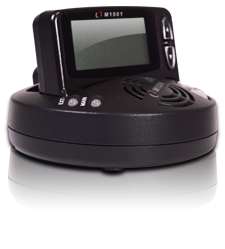

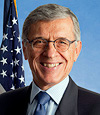

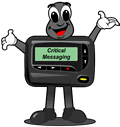







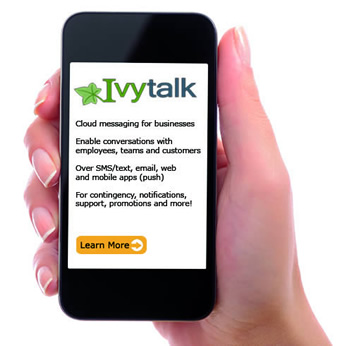
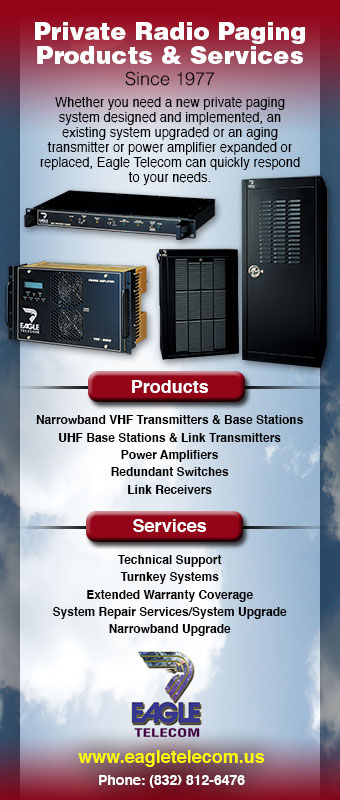






















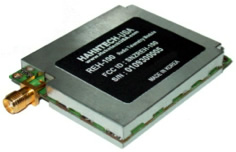

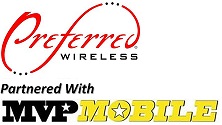





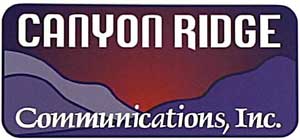





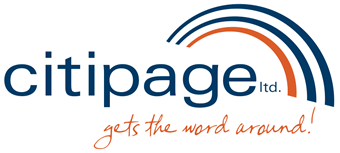









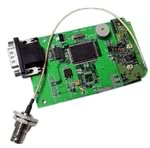


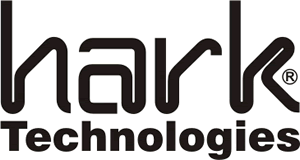
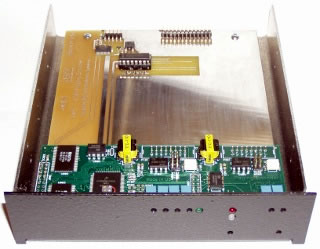

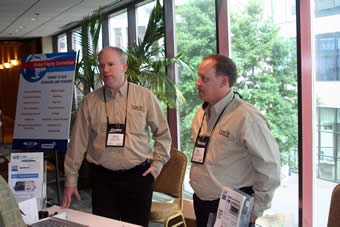 David George and Bill Noyes
David George and Bill Noyes


